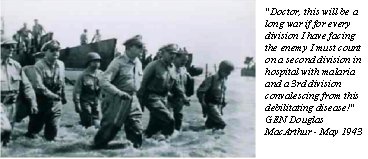
 Product Name: Chloroquine
Product Name: ChloroquineCommercial Name: Aralen Application: Anti-malarial drug for treatment & prevention Date of Licensure: October 1949 Type of Product: : 4- aminoquinoline Company of manufacture: Multiple pharmaceutical companies were involved in the development of this drug, including Winthrop, Abbott, E.R. Squibb and Sons, Eli Lilly and Company, Sharp and Dohmne, Inc. The drug is currently manufactured by Sanofi Synthelabo. Reasons for development: Malaria is an acute and chronic disease caused by obligate intracellular protozoa of the genus Plasmodium. The four species that cause human malaria are P. malariae, P. vivax, P. falciparum and P. ovale. The parasites are transmitted to humans via the bite of female mosquitoes of the genus Anopheles, usually at night. The clinical course of malaria is characterized by high fever, chills, anemia, and enlargement of the spleen. P. falciparum may quickly cause serious or fatal complications (such as brain infection), and P. vivax and P. ovale can cause relapsing disease. Role of DoD: Malaria is a significant threat in tropical and some subtropical regions, especially to persons from non-malarious areas lacking immunity to malarial parasites. Malaria can quickly decimate troop strength and cause serious illness and death. The disease has had a major impact on several wars involving U.S. troops, including the Spanish-American War, the Pacific Theater in World War II, and the Vietnam War. The availability of prophylactic drug regimens and personal protective measures such as insect repellent and bed nets does not guarantee protection against this disease. Service members may develop malaria after leaving a malarious area because of an inadequate prophylaxis regimen or lack of compliance with this regimen. Some civilian medical workers may not be prepared to recognize and treat these infections. Also, because vectors capable of transmitting malaria exist in the United States, malaria in returning troops can be transmitted to other humans. Quinine, derived from the bark of the cinchona tree, has been a mainstay of malaria treatment for hundreds of years. But the World Wars prompted an effort to develop synthetic drugs to prevent and treat malaria. During World War I, countries producing quinine were controlled by Allied forces. Projected quinine shortages and the need for long-acting prophylactic drugs led to an effort by German companies to synthesize antimalarial compounds. (Quinine is an effective treatment especially when given with other drugs for certain types of malaria, but adverse effects The Allied push to synthesize antimalarial agents --spearheaded by the U.S. military-- was prompted by the seizure of Java (which supplied 90% of the world's supply of quinine at the start of World War II). Concerns about adverse effects of atabrine led to initial noncompliance with use during World War II. After Neil Fairly, an Australian military physician revealed that placing volunteer Australian troops on a daily atabrine regime was effective in preventing malaria, atabrine prophylaxis was rigidly imposed on Allied forces operating in malarious areas. Control of malaria was an important factor in Allied success in World War II. Allied interest in chloroquine followed the capture of German supplies of a structural analog called sontoquine in Tunis in 1943. Both chloroquine and sontoquine had been patented in the U.S in 1941 by the Winthrop Company, which had a cartel agreement with IG Farbenindustrie, who originally manufactured the compounds, but drug development had stalled. Reassessment of chloroquine revealed that the drug not only rapidly controls clinical symptoms of susceptible falciparum and vivax malaria with minimal toxicity, but is valuable as a once-weekly prophylactic drug . However, the emergence of chloroquine-resistant P. falciparum and P. vivax have rendered this drug less useful. |
| Chloroquine | Primaquine | Sulfadoxine | Mefloquine | Doxycycline | Halofantrine | Atovaquone |
